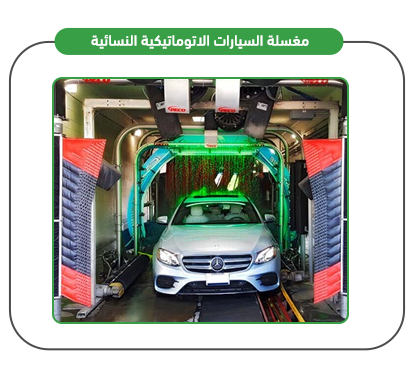A feasibility study for a women’s car wash is considered a profitable project due to the increasing number of cars around the world. After women entered the field of driving cars, especially in the Kingdom of Saudi Arabia, it became important to establish a women’s car wash that provides its services to women.

A feasibility study for a women’s car wash is considered a profitable project due to the increasing number of cars around the world. After women entered the field of driving cars, especially in the Kingdom of Saudi Arabia, it became important to establish a women’s car wash that provides its services to women. The automatic women’s car wash is also less expensive than its counterpart, which is a regular car wash, as it includes a small number of workers, but it includes modern and advanced equipment that cleans the car’s interior, vacuums dust, gets rid of stains and bad odors. Every part of the car is cleaned with high professionalism and skill, while polishing the car from the outside, washing it, changing the oils and lubricating the car. The cleaning operations depend on the best cleaning materials and the least harmful to the car body to preserve the car’s paint and the color and quality of the upholstery inside. There is also a special corner inside it for selling car accessories.



The car wash uses an automatic car wash.
All areas and parts of the car are cleaned.
Cars are cleaned and polished with high precision.
Tough stains, grease, and contaminants are removed without chemicals.
Cleaning is done to kill germs and microbes and eliminate unpleasant odors.
Quick response to customer requests and prompt response to their required tasks.
Cars are washed and polished by a team of highly qualified and efficient workers.
Car paint is preserved by avoiding the use of harmful materials in washing and polishing.
Executive summary
Study project services/products
Market Size Analysis
Risk Assessment
Technical study
Financial study
Organizational and administrative study

Service sector in GCC countries
According to the macroeconomic theory of sectors, the economy is divided into three main and large sectors: the first; – is the sector that is based on collecting raw materials and includes mining companies, timber companies, oil exploration companies, in addition to agricultural and fishing industries. The second sector; is the sector that depends on goods and their sale, such as: (car manufacturing, furniture, clothing trade… etc.). As for the third sector, known as the “services” sector; it is the sector responsible for providing and producing services, essentially relying on intangible things, such as: entertainment, health care, transportation, hospitality, restaurants, etc. This theory believes that the more advanced countries are, the more their economies are based on the third sector, unlike primitive countries, which rely mostly on the first sector (the United States of America, for example, the service sector constitutes 85% of its economy).
Kingdom of Saudi Arabia:
The State of Qatar:
Kuwait:
United Arab Emirates:
Sultanate of Oman:
Global Service Sector
The service sector is the major contributor to the world’s gross product; It alone accounts for more than three fifths of this output. The sector does not rely on the production of tangible goods such as automobile and furniture, but rather on the provision of intangible services such as banking, medical care, transportation, hospitality, leisure, etc. The value of the sector market was estimated in 2020 at USD 10,814.49 billion and rose to USD 11,780.11 billion in 2021. The market achieved a CAGR of 8.9%. After recovering from the effects of the coronavirus pandemic, global market experts expect the sector’s market to reach US $ 15683.84 billion by 2025, bringing the market to a CAGR of 7% in the coming years.
